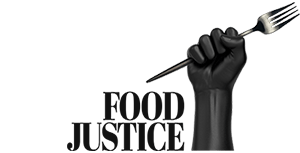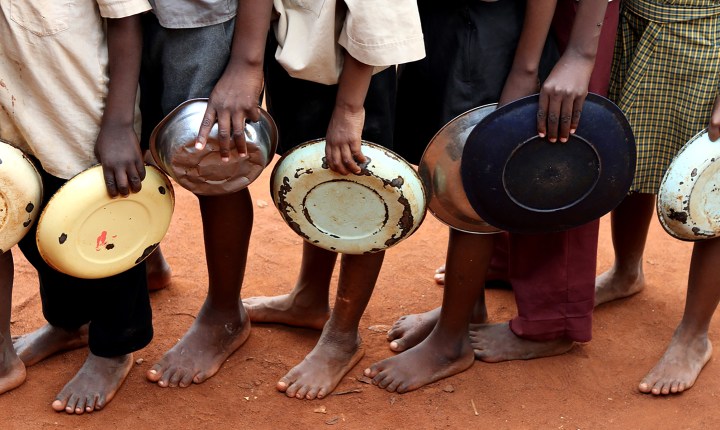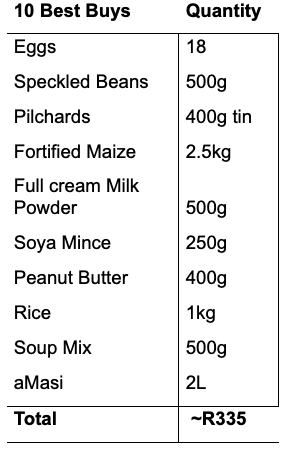
OVERCOMING CHILD MALNUTRITION
How to add diversity to your meals without breaking the bank

Stunting affects the development of more than a quarter of South African children under the age of five. The impact of the Covid-19 pandemic and resulting hunger crisis is expected to exacerbate stunting globally, increasing the need for critical nutritional services among children by 15% and placing an additional 1.7 million South African children at risk for stunting by 2025.
South Africa is a diverse place to live not only in its culture and geography but also its cuisine, yet our dinner plates don’t always reflect the kind of nutrient diversity needed to ensure we get enough to build healthy bodies and minds. With soaring food prices, this task has become all the more challenging, increasing the risk of not only poor dietary diversity but also instances of acute malnutrition (the kind we can see and treat quickly) and the more difficult to reverse chronic malnutrition or stunting.
What should children be eating?
Seven colours are important every day of the week, not just on Sundays. Ensuring our meals provide good protein sources (meat, tripe, eggs, legumes), and carbohydrates (potatoes, rice, maize meal), including fruits and vegetables and small amounts of fats is key to dietary diversity. This is especially true for children.
Yet the reality is very different in part due to the rising cost of food.
Grow Great, a national early childhood development campaign committed to mobilising South Africa to achieve zero stunting by 2030, recently released results from surveys conducted in seven food-vulnerable districts across the country. Of the 1,000 children included, 83% ate from four or fewer food groups, with the least consumed foods being legumes and nuts (10%), vitamin A-rich fruits and vegetables (20%), eggs (22%) and other fruits and vegetables (31%).
For many South African children, a suitably diverse diet is unachievable unless highly nutritious foods are made more affordable. Items such as eggs, beans, tinned fish, fortified maize meal, peanut butter, amasi, soya mince, beans and full-cream milk powder are high in nutritional value and can protect vulnerable individuals from slipping into acute malnutrition.
But they are becoming increasingly unaffordable.

Stunting affects the development of more than a quarter of South African children under five. (Photo: Gallo Images / Brenton Geach)
When money is scarce, households tend to buy lower-cost carbohydrates and less protein and micronutrient-rich foods, which are generally more expensive. In trying to supplement the diets of people at risk of acute malnutrition, it is therefore important to increase the protein and micronutrient intake to a greater extent than carbohydrates which are often energy-dense but micronutrient poor.
While we can’t immediately solve the challenge of rising food prices, all is not lost — small changes to how we look at our weekly shopping basket could make all the difference to optimise the money we are already spending and the nutritional value of food.
Grow Great has identified a basket of 10 nutritious foods, which it regards as the “best buys” in trying to make money go as far as it can in promoting healthy growth and development. This basket provides about 10% of the energy requirement of a family of four (two adults and two children for a month). While that does not seem like much, it could be the “top-up” for a family’s diet that makes the difference between having just enough food and slipping into acute malnutrition.

Of the 10, we will focus on the nutritional value of five.
Portion size: 1 egg
Eggs: Eggs are a nutrient-dense food source, mostly composed of protein and fat and remain to be one of the most affordable sources of protein. Eggs contain omega 3, omega 6, iron and choline, which are important for growth and brain development. Including eggs in the diet can contribute to achieving a more diverse and nutritionally adequate diet.
Portion size: ½ cup dried or 75g
Legumes (dried beans and lentils and soya mince)*: Legumes are a rich source of good quality protein, slow-release carbohydrates, dietary fibre, various vitamins and minerals and non-nutritive components, which may have several beneficial health effects. Legumes are low in energy, fat and sodium content. Therefore, legumes contribute to dietary adequacy, while protecting against non-communicable diseases. In combination with maize, the staple food of many South Africans, beans and lentils improve the protein quality of diets.
Portion size: 1 cup or 200ml
Full cream milk powder*: Milk is a good source of high-quality protein and contains a useful amount of essential amino acids. Milk can be used to complement foods like maize and wheat resulting in a meal with all the amino acids, and is beneficial in populations where maize and bread are staples.
Portion size: 3 heaped tablespoons dried or 25g
Fortified maize meal*: Maize meal is a South African staple and the primary energy source for many South Africans. While milled maize meal is relatively low in vitamins and minerals, fortified maize meal (see logo below) has had vitamins and minerals (vitamin A, B1, B2, B6, niacin, folic acid, iron and zinc) added to it which are essential to optimal growth, development and immune system strength.
Portion size: 1 small piece or 75g
Tinned fish (sardines and/or pilchards)*: Animal sources of protein, such as tinned fish, constitute a high-quality and high-quantity protein, as they contain essential amino acids in the right proportions. In South Africa, eight micronutrients, namely vitamin A, B1, B2, B6, B12, niacin, iron and zinc, have been identified as lacking in the population’s diet. Animal-sourced food is a particularly rich source of nutrients. Adding small amounts to a plant-based diet can yield considerable improvements in human health.
*Alternative options could include:
- Samp and bean, soup mix
- Chicken
- Bread/rice/pasta
- Amasi/long-life milk
- Peanut butter
Not used to cooking with some of these foods? No problem, we’ve got you covered. Here are two dietitian-approved recipes to add to your weekly rotation.
Fish cakes
Makes 20
Ingredients
|
Instructions
|
Boontjie Sop/South African Bean Soup
Serves 4
Ingredients
|
Instructions
|
Call to action
Times are tough, but we can make small positive changes with our resources and newfound knowledge. The next time you are in your local food shop, see how many 10 best buys you can add to your family’s meals for that week. DM/MC
Nicola Eley is the deputy executive director of the Grow Great Campaign.


















 Become an Insider
Become an Insider
Comments - Please login in order to comment.